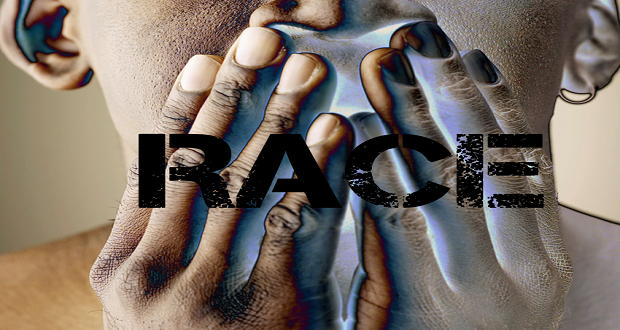
Within the last decade, and in particular the years following the murder of George Floyd in 2020, corporations have doubled down on their DEI efforts. Billions of dollars are being spent yearly to increase the overall racial representation and holistic diversity of companies around the world, especially in the U.S. and U.K. Yet, for all the money being spent by organizations, DEI experts themselves are a relatively new breed of professionals. Within any emerging field there are bound to be growing pains as folks find their footing. Still, it’s shocking to see how little funding and resources DEI professionals themselves are given in the corporate setting to elevate their skills.
It’s shocking to see how little funding and resources DEI professionals themselves are given in the corporate setting to elevate their skills. Click To TweetDEI Continues to Grow
As DEI continues to grow and welcomes “justice” and “belonging” as concepts to its purview, it becomes more important than ever to ensure DEI professionals are able to accurately define their work in order to educate leadership on the most effective methodologies for achieving acclaimed “best practice” status. To this end, I present the idea that DEI in a corporate setting can be defined by two different “workstreams.” One type focuses on the internal wellness and belonging of employees, while the other works on the external facing, often through the lens of the products and services that organizations provide.
‘People DEI’ and ‘Product/Service DEI’
There exist two different facets of diversity, equity, and inclusion work that most DEI professionals will encounter as part of their role.
“People DEI” (Type A) focuses on internal programmatic, policy, recruitment, and retention efforts. “People DEI” includes things like supporting ERGs, reviewing internal policies to ensure that they are as inclusive as possible, investing in training for employees and leadership, working to review compensation to ensure equity systems are in place, creating programs which target historically underrepresented communities for professional development and advancement, and investing in DEI leaders to manage and lead these efforts.
“Product/Service DEI” (Type B) has a mostly external function. Product/Service DEI looks at the work an organization or team creates, whether that’s a single product, a service, or a type of entertainment, and informs that work through a DEI lens. You might see this show up at work though DEI Review Boards that examine the work created by the organization and inform the creation or recommend changes based on DEI best practices and those reviewers’ own representative demographics. It could be something as complex as thinking through how to interact authentically with a specific racial demographic, to more simple means — if no less arduous in execution — such as ensuring that commercials or scripts include diverse representation.
DEI work that focuses on reputation, company social responsibility (CSR), and third-party representation — i.e., supplier diversity, vendor diversity, pro-bono work, sustainability efforts, external mentorship, internships, and donations — can fall into either Type A or B depending on the nature of those efforts.
For example:
- A sustainability initiative which targets internal employees’ waste management — such as committing not to use disposable cups and instead providing reusable water bottles for onsite employees — would be considered People DEI because the focus is on improving the employee work experience internally (while also having an external impact).
- However, partnering with a sustainability-focused organization that takes disposable cups and remakes them into a new product for reuse and sale would be considered Product/Service DEI because it focuses externally, with the people of the parent organization not seeing a direct benefit from those efforts.
So What?
It’s important to understand as a DEI professional that these two workstreams exist because they’re often conflated by leadership, to the detriment of employees.
For example: Leaders will often bring work to ERGs and have them review with a demographic lens, pro bono. The company benefits by having socially conscious, demographically competent work exist to boost their reputation and directly affect their bottom line, while employees of the company (members of those ERGs) receive little-to-no recognition or compensation.
The result is that ERG members/leaders often experience a higher-than-average rate of burnout and sense of dissatisfaction with their company. They are, in essence, providing additional hours of unpaid work for their company and seeing no direct benefit from those efforts. In this example, understanding that People DEI and Product Service/DEI are separate, and therefore, must be treated differently, can help mitigate these issues.
ERG members/leaders often experience a higher-than-average rate of burnout and sense of dissatisfaction with their company. They are providing additional hours of unpaid work for their company with no direct benefit. Click To TweetSince ERGs fall within People DEI it needs to be understood that the return on investment (ROI) for these organizations can be difficult to see directly. That being said, solid research notes the importance of ERGs and representation. Most notably, 76 percent of job seekers noted that diversity is an important consideration when deciding where to work, and this number increases among members of historically marginalized groups. Companies with high levels of diversity and inclusion also tend to outperform those that do not prioritize these efforts. ERGs simply existing to grow their representation and membership, while occasionally informing the business of needs on their own time, have positive growth aspects for a company.
Yet, when the business begins to dictate its needs to the ERGs (as we see in the example above) without a proper system of compensation in place, we begin to see how conflating Product/Service DEI with People DEI can become detrimental. It can be argued that the inverse is just as true — as might be the case with an external DEI Review Board that isn’t given proper training or benchmarks for success.
Were a DEI professional to intervene in this example, they might recommend that leadership establish a DEI Review Board of willing employees, with some system of compensation, so that folks could opt in to review work if they desire to. That way, the efforts of the ERGs and the needs of the company can both be honored. Or, where separation isn’t possible, simply having a dedicated, supported DEI professional to advocate for the time and additional recognition/compensation of ERGs can help ease the sense of being taken advantage of.
Simply having a dedicated, supported DEI professional to advocate for the time and additional recognition/compensation of ERGs can help ease the sense of being taken advantage of. Click To TweetKey Takeaway
Defining the different workstreams of DEI isn’t purely academic; it allows DEI professionals to explain the reasoning behind their decisions and educate leaders on how best to move forward with regard to each workstream. That’s to say, that each type of DEI — whether people or product/service—needs special insights and attention. Graphic design isn’t the same as visual design, but these are often elements that a comprehensive designer can manage. Similarly, a DEI professional’s management of these two workstreams should be understood as distinct, and the solutions presented as tailored to that specific type.
Each type of DEI (people or product/service) needs special insights and attention. A DEI professional’s management of these workstreams should be understood as distinct and tailored to that specific type. Click To Tweet

















